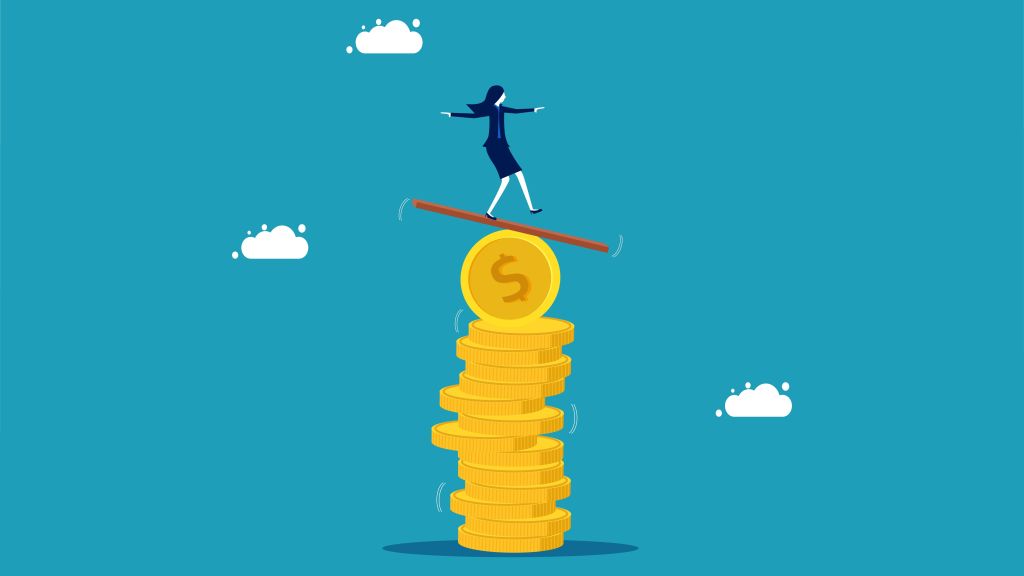Published July 18, 2022 • 7 Min Read
The Bank of Canada (BoC) raised its key interest rate by another three-quarters of a percentage point on Sept. 7, 2022, continuing its efforts to temper high inflation.
The latest increase brings the central bank’s policy rate to 3.25 per cent, and comes after a surprise hike of one full percentage point in July and four smaller rate hikes earlier this year ranging from one-quarter to one-half of a percentage point each.
The BoC also signalled that it’s not done raising rates.
“Given the outlook for inflation, the Governing Council still judges that the policy interest rate will need to rise further,” it said in its rate decision statement.
According to RBC Economics, the BoC hinted that the pace of rate hikes will slow going forward. RBC economists are forecasting one more 0.25 percentage point increase in October, with the overnight rate peaking at 3.50 per cent – although they believe there’s some upside risk to that forecast.
This latest hike comes as inflation remains at a stubbornly high 7.6 per cent in July 2022. The BoC says it continues to expect the economy to moderate in the second half of this year, as global demand weakens and tighter monetary policy begins to bring demand more in line with supply. RBC economists continue to expect a mild recession in 2023.
How higher interest rates affect investments
While higher interest rates can create added stress for many Canadians already concerned with growing debt loads, they can also have a positive effect on certain types of investments.
In the current environment, understanding the relationship between interest rates and investments can help you make stronger investing choices. Here are some key points to keep in mind:
Savings and Guaranteed Investment Certificates (GICs)
When borrowing rates increase, as they have lately, financial institutions have more room to offer competitive interest rates on their savings accounts and GICs. Located on the lower end of the risk and return spectrum, GICs offer buyers safety and stability in unpredictable environments. Investing in a GIC typically requires clients to lock in for a specific period of time, more commonly known as a term. Term length can range anywhere from one day to several years.
In exchange, the GIC earns interest. The interest rate is known at the time of purchase and depends on a variety of factors such as market conditions, term length (in general, the longer the term, the higher the interest rate), whether or not it’s redeemable, and other unique characteristics of the GIC.
Debts
Those with high debt loads may start to feel more pinched when interest rates rise. Canada’s major financial institutions use the policy rate set by the Bank of Canada to determine interest rates for variable mortgages, loans and lines of credit. Individuals with variable-rate debt will be impacted the most, owing higher amounts of interest on their loan.
Credit cards and auto loans, for example, won’t be affected as much since they’re generally fixed-rate debt. Fixed-rate mortgage holders may face higher rates upon renewal, particularly if the rate has increased multiple times since the start of their mortgage term.
Equities (or Stocks)
Typically, when interest rates rise, stock markets decline. Because borrowing becomes more expensive, people and businesses tend to spend less. This decreased spending may mean companies hire less or have layoffs, see lower productivity and face reduced earnings. These effects often cause stock prices to fall. However, if a rate hike is seen as a sign of the Bank of Canada’s confidence in the economy, there may be a smaller negative impact on the stock market.
Markets don’t simply go up and down in a straight line, says Sarah Riopelle, Vice-President and Senior Portfolio Manager, RBC Global Asset Management, but instead experience many ups and downs, driven by a host of different factors. Some of these are fairly small and are resolved quickly, she says, while others are larger and can take longer for markets to digest.
“What is important to remember is that downturns have happened before and will happen again. But they are not a reason to panic.”
Bonds
Much like GICs, government bonds give you a fixed rate of interest and return your initial investment at maturity. These are more flexible than GICs because you can cash in your bonds at any time, although you may have to sell them at a loss. Government bond prices and interest rates generally move in opposite directions – when one goes up, the other goes down. A bond may offer higher yields (that is, generate higher expected earnings) when markets start to anticipate an increase in rates.
Margin accounts
A margin account is a brokerage account that lets you access additional funds by borrowing against the value of your investments. The funds are loaned to you based on an interest rate that changes periodically. Because rising interest rates mean a rise in the cost of borrowing, this usually means you have to pay more to borrow against your existing investments.
How to stay ahead of inflation and unpredictable markets
As RBC Global Asset Management’s Riopelle says, what matters isn’t what the market does, but what you do in response. Stick to the solid financial plan that you put together with your advisor. Your best path forward, according to Riopelle, is following these points:
1. Diversification is still your most important investment strategy.
This one was and still is at the top of my list! If recent history has shown us anything, it’s that diversification remains one of the best ways to manage volatility in your portfolio. Different asset classes and markets go up and down at different times, so combining them into a well-diversified portfolio will smooth out investment returns over time. This can help you manage through volatile markets like the one we have experienced so far in 2022. It will also help you stick to your long-term investment plan.
2. It’s time in the market that matters, not timing the market.
One thing I have learned is that it is extremely difficult to successfully time the market. It involves making two decisions – when to get out and when to get back in. Even if you manage to find the right time to get out of the market, it’s highly unlikely that you’ll be able to get back in at the right time. As difficult as the market drawdown was in March 2020, sitting on the sidelines meant you likely missed out on some pretty impressive gains that followed shortly after the low. Missing even a few of the strongest days in the market can have a significant impact on your overall investment returns.
3. Someone’s portfolio will always be doing better than yours (or at least they will say it is!).
People will always tell stories of a hot stock or investment tip that made them money. Meme stocks, bitcoin and NFTs all come to mind. But no discussion of investment returns or performance is meaningful without also considering the level of risk involved. To earn higher returns, you need to accept more risk or volatility. So those who are bragging about their investing success could have a very different risk tolerance or time horizon than you, or they may simply be exaggerating their results. Either way, you should not take this as an indication that your investment portfolio is inferior or that you are missing out on something.
Read more in 10 basic truths about investing.
This article is intended as general information only and is not to be relied upon as constituting legal, financial or other professional advice. A professional advisor should be consulted regarding your specific situation. Information presented is believed to be factual and up-to-date but we do not guarantee its accuracy and it should not be regarded as a complete analysis of the subjects discussed. All expressions of opinion reflect the judgment of the authors as of the date of publication and are subject to change. No endorsement of any third parties or their advice, opinions, information, products or services is expressly given or implied by Royal Bank of Canada or any of its affiliates.
Any information, opinions or views provided in this document, including hyperlinks to the RBC Direct Investing Inc. website or the websites of its affiliates or third parties, are for your general information only, and are not intended to provide legal, investment, financial, accounting, tax or other professional advice. While information presented is believed to be factual and current, its accuracy is not guaranteed and it should not be regarded as a complete analysis of the subjects discussed. All expressions of opinion reflect the judgment of the author(s) as of the date of publication and are subject to change. No endorsement of any third parties or their advice, opinions, information, products or services is expressly given or implied by RBC Direct Investing Inc. or its affiliates. You should consult with your advisor before taking any action based upon the information contained in this document.
Furthermore, the products, services and securities referred to in this publication are only available in Canada and other jurisdictions where they may be legally offered for sale. Information available on the RBC Direct Investing website is intended for access by residents of Canada only, and should not be accessed from any jurisdiction outside Canada.
Share This Article






